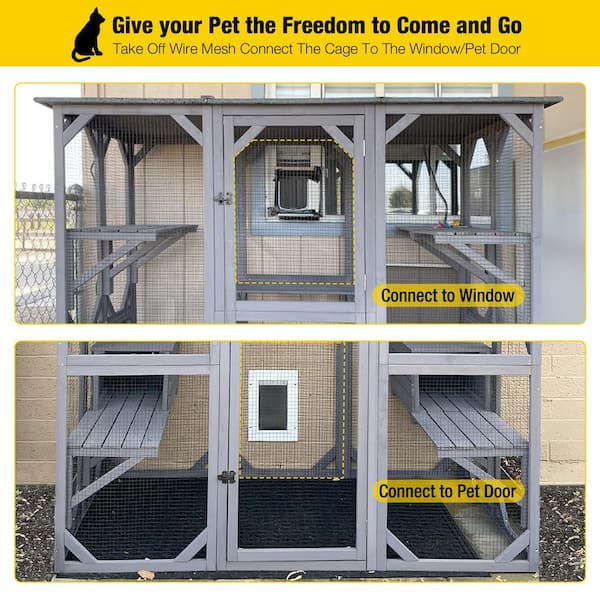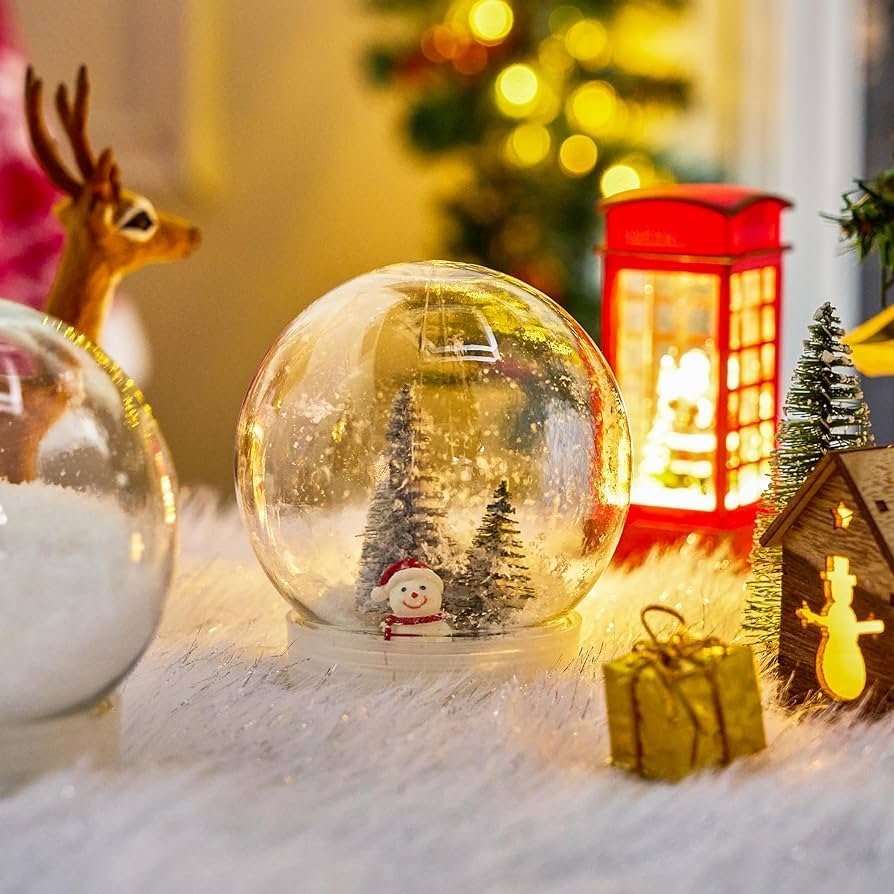Crafting Paradise: DIY Cat Enclosure for Feline Freedom is a concise guide on creating a safe and stimulating outdoor space for your feline companion. With clear instructions and helpful tips, this article will show you how to construct a cat enclosure that allows your cat to enjoy the outdoors while keeping them protected from potential dangers.
By following these simple steps, you can provide your cat with the freedom they crave, ensuring their well-being and happiness. So, let’s get started on building a purrfect paradise for your furry friend!
Choosing The Right Location
Crafting a paradise for your feline friend starts with choosing the right location for your DIY cat enclosure, ensuring their freedom and safety.
Considering Outdoor Space
When it comes to crafting a paradise for your feline friend, choosing the right location for their DIY cat enclosure is crucial. You want to create a safe and stimulating environment that allows your furry companion to soak up the sun and embrace their natural instincts. But where should you build this purr-fect space?
Evaluating your outdoor space is the first step. Look around and assess the available area you have. Consider the size, shape, and layout of your yard or balcony. This will help you determine the most suitable location for the cat enclosure.
If you have a spacious backyard, you have the advantage of ample room to design a large, multi-level enclosure. On the other hand, if your outdoor space is limited, you can still create a cozy retreat for your cat using vertical space or a compact design.
Evaluating Safety Measures
Safety should always be a top priority when building a DIY cat enclosure. It’s essential to evaluate potential hazards and take necessary precautions to protect your beloved pet.
To ensure your cat’s safety, inspect the area for any toxic plants or substances nearby. Remove or relocate them to prevent accidental ingestion. Additionally, check for any small gaps or holes in fences or netting that could allow your curious kitty to escape.
Consider the surrounding wildlife and neighborhood traffic as well. If you live in an area with high bird activity or busy roads, it might be best to position the cat enclosure away from these potentially distressing factors.
Moreover, evaluate the prevailing weather conditions. Make sure the location provides adequate shade for those hot summer days and protection from rain or harsh winds.
Gathering Materials And Tools
Before you start building a DIY cat enclosure, it’s important to gather all the necessary materials and tools. This will make the process much smoother and more efficient. In this section, we’ll discuss the essential materials and useful tools you’ll need to create a safe and comfortable space for your feline friend.
Essential Materials
When it comes to building a cat enclosure, there are a few essential materials you can’t do without. Here’s a list of what you’ll need to get started:
- Mesh or wire fencing: This will be the main component of your cat enclosure, providing a secure barrier while still allowing your cat to enjoy the sights and sounds of the outdoors. Make sure to choose a sturdy material that will withstand your cat’s playful nature.
- Wooden posts or PVC pipes: These will serve as the framework for your cat enclosure, providing structure and support. Depending on the size and design of your enclosure, you may need several posts or pipes.
- Door or gate: You’ll need a way to enter and exit the enclosure, so don’t forget to include a door or gate in your materials list. Make sure it’s secure and easy to open.
- Outdoor-grade paint or stain: To protect the wooden posts or PVC pipes from weather damage, it’s a good idea to apply a coat of outdoor-grade paint or stain. This will help ensure the longevity of your cat enclosure.
- Fasteners: Nails, screws, and bolts will be necessary to secure the fencing, posts, and other components together. Make sure to choose the appropriate sizes and types of fasteners for your specific materials.
Useful Tools
In addition to the essential materials, there are several tools that will come in handy during the construction process. Here are some useful tools you should have on hand:
- Tape measure: Accurate measurements are crucial when building a cat enclosure, so a tape measure is essential.
- Saw: Depending on the materials you’re using, you may need a saw to cut the wooden posts or PVC pipes to the desired lengths.
- Drill: A drill will be necessary for creating holes, attaching fasteners, and completing other tasks.
- Staple gun: If you’re using mesh fencing, a staple gun will make it easier to attach the fencing securely to the wooden posts or PVC pipes.
- Level: To ensure that your cat enclosure is level and balanced, a level will be helpful.
- Protective gear: Don’t forget to use safety goggles, gloves, and a dust mask to protect yourself while working with tools and materials.
Now that you know the essential materials and useful tools required for building a DIY cat enclosure, you’re ready to move on to the next step: constructing the framework. Stay tuned for the next section, where we’ll guide you through the process of building the structure of your cat’s paradise!
Designing The Cat Enclosure
Craft a feline sanctuary with a DIY cat enclosure to give your furry friend the freedom they crave. This guide will help you design a paradise for your cat’s ultimate enjoyment.
Planning The Layout
When it comes to designing your DIY cat enclosure, one of the first things you need to consider is the layout. Planning the layout properly will ensure that your feline friends have enough space to move around and explore, while also taking into account your available space.
Here are some key factors to keep in mind:
- Measure your available space. Start by measuring the area where you plan to install the cat enclosure. This will give you a clear idea of the space you have to work with.
- Consider the number of feline occupants. If you have multiple cats, you’ll need to factor in enough space for them to live comfortably together. Each cat should have ample space for playing, climbing, and resting.
- Take advantage of vertical space. Cats love to climb, so incorporating vertical elements into your enclosure is essential. Consider adding shelves, perches, or even a cat tree that allows your furry friends to enjoy different levels and vantage points.
- Ensure easy access. Your cat enclosure should have a secure entrance for your feline friends to enter and exit. Additionally, make sure the entrance is easily accessible for you as well, allowing you to clean and maintain the enclosure effortlessly.
Incorporating Climbing And Perching Areas
Cats are natural climbers and love to be above ground level. Providing climbing and perching areas in your DIY cat enclosure will not only keep them entertained but also allow them to satisfy their natural instincts.
Here are some ideas to consider:
- Install vertical climbing structures. Adding wall-mounted climbing posts or attaching cat-friendly carpeted ramps to the walls will encourage your cats to explore and climb.
- Include perching platforms. Place strategically positioned perching platforms or shelves at different heights to give your cats a cozy spot to relax and observe their surroundings.
- Introduce hanging toys. Hanging toys, such as feather wands or catnip-filled balls, can be attached to the enclosure’s ceiling or walls, providing your cats with extra entertainment and play opportunities.
- Consider outdoor features. If your cat enclosure includes access to an outdoor section, incorporate natural elements like tree branches or wooden platforms to create additional climbing and perching areas.

Credit: www.amazon.com
Constructing The Frame And Enclosure
Building a DIY cat enclosure is a wonderful way to provide your feline friend with a safe and stimulating outdoor space. Constructing the frame and enclosure may seem like a daunting task, but with some simple steps and basic tools, you can easily create a secure and comfortable paradise for your furry companion.
Step 1: Before you begin, decide on the dimensions for your cat enclosure. Measure the available space in your yard and consider the number of cats you have and their activity levels. This will help you determine the size of the base and frame needed.
Step 2: Prepare the base by clearing the area of any debris and ensuring it is level. This will provide a sturdy foundation for the enclosure and prevent any wobbling or instability.
Step 3: Next, assemble the frame using pressure-treated lumber or PVC pipes. These materials are durable and weather-resistant, ensuring the longevity of your cat enclosure. Cut the lumber or PVC pipes to the desired lengths, ensuring they correspond to the measurements you determined earlier.
| Materials | Quantity |
|---|---|
| Pressure-treated lumber | 8 pieces |
| PVC pipes | 6 pieces |
| Nails or screws | Enough to secure the frame |
Step 4: Once the base and frame are secure, it’s time to install the mesh walls and roof. Measure the dimensions of each side of the frame, including the top, and cut the mesh accordingly.
Step 5: Attach the mesh securely to the frame using zip ties or staples. Make sure the mesh is pulled taut to prevent any gaps or loose areas that could allow your cat to escape or predators to enter.
Step 6: For the roof, ensure you use a sturdy material like mesh or wire that can withstand the elements. Attach it securely to the top of the frame, making sure to pull it tightly to prevent sagging.
- Measure the frame dimensions
- Cut mesh to fit each side
- Secure mesh with zip ties or staples
- Attach a sturdy roof material
By following these simple steps, you can construct a strong and secure frame and enclosure that will provide your cat with the freedom and safety to enjoy the outdoors. Always ensure the enclosure is well-maintained and regularly check for any wear or tear that may require repairs. Remember, safety and comfort are paramount to create the ultimate cat paradise!
Adding Finishing Touches
When it comes to crafting a paradise for our feline friends, adding the finishing touches is what truly elevates a DIY cat enclosure from functional to exceptional. By implementing cat-friendly features and creating an access door, we can ensure our furry companions enjoy their newfound freedom to the fullest.
Implementing Cat-friendly Features
When designing a cat enclosure, it’s important to incorporate features that cater to our cats’ natural instincts and desires. This not only enhances their overall experience but also promotes their physical and mental well-being.
To create vertical interest, consider installing shelves, platforms, or perches at different heights. This allows our feline friends to climb, explore, and enjoy a bird’s-eye view of their surroundings. Opt for sturdy materials to ensure their safety and stability.
To satisfy their scratching needs and save our furniture, providing a scratching post or a dedicated scratching area is essential. This can be as simple as attaching a sisal rope to a vertical post or incorporating a scratching board into the enclosure’s design. Place it strategically, near their favorite lounging spot for maximum utilization.
Another cat-friendly addition is the inclusion of hiding spots or cozy nooks within the enclosure. This can be achieved by incorporating tunnels, cubbies, or even covered hideaways. These secluded spaces provide a sense of security and privacy for our furry friends to retreat to whenever they need some alone time.
Creating An Access Door
An access door is crucial to allow our cats to enter and exit their enclosed paradise easily. When designing the door, ensure it is wide enough to comfortably accommodate our cats’ size and allows for smooth movement.
Consider installing a cat flap or a pet door, which can provide our furry friends with independence to come and go as they please. These doors come in various sizes and can be easily installed onto the enclosure. Ensure they are made of durable materials and properly sealed to prevent any unwanted intruders.
If a cat flap or pet door is not feasible, a hinged or sliding door can be constructed. Ensure it is securely fastened to prevent any accidental escapes. Additionally, incorporating a latch or lock mechanism can provide further security and peace of mind.
| Key Points |
|---|
| 1. Implement cat-friendly features: Provide vertical interest, scratching areas, and hiding spots. |
| 2. Create an access door: Install a cat flap, pet door, or construct a hinged/sliding door. |
By implementing cat-friendly features and creating a suitable access door, we can complete the construction of a DIY cat enclosure that not only provides our cats with the freedom they desire but also ensures their safety and happiness. With these finishing touches, we have successfully crafted a paradise tailor-made for our beloved feline companions.

Credit: www.homedepot.com

Credit: www.homedepot.com
Frequently Asked Questions Of Crafting Paradise: Diy Cat Enclosure For Feline Freedom
How To Build A Cat Paradise?
To build a cat paradise, start by providing plenty of vertical structures like cat trees and shelves. Offer different types of scratching surfaces and toys to keep them engaged. Create hiding spots and cozy beds. Set up a variety of interactive play areas and ensure constant access to food, water, and litter boxes.
How Do You Make A Cat Enclosure?
To create a cat enclosure, follow these steps: 1. Choose a suitable location in your yard or indoors. 2. Install a sturdy fence or use cat netting to create a protective barrier. 3. Add platforms, shelves, and hiding spots for your cat’s comfort.
4. Provide access to food, water, and a litter box within the enclosure. 5. Regularly inspect and maintain the enclosure for safety and cleanliness.
What Is The Best Mesh For A Cat Enclosure?
The best mesh for a cat enclosure is high-quality stainless steel mesh. It offers durability, safety, and protection from escaping or predators. Stainless steel mesh is strong, resistant to corrosion, and has smaller holes to prevent cats from getting their paws stuck.
What Is The Best Flooring For A Cat Enclosure?
The best flooring for a cat enclosure would be scratch-resistant and easy to clean. A good option would be vinyl or laminate flooring, as they are durable and less likely to get scratched by your cat’s claws. Additionally, they can be easily wiped or mopped clean, keeping the enclosure hygienic.
Conclusion
Creating a DIY cat enclosure provides your furry friend with the freedom and security they deserve. By following these simple steps, you can craft a paradise for your feline companion. Not only does this project enhance their quality of life, but it also keeps them safe from potential dangers.
So why wait? Build your cat’s dream enclosure and watch them enjoy their newfound freedom.

